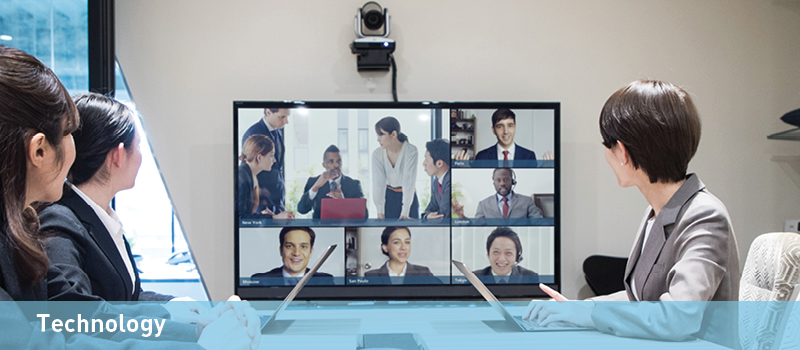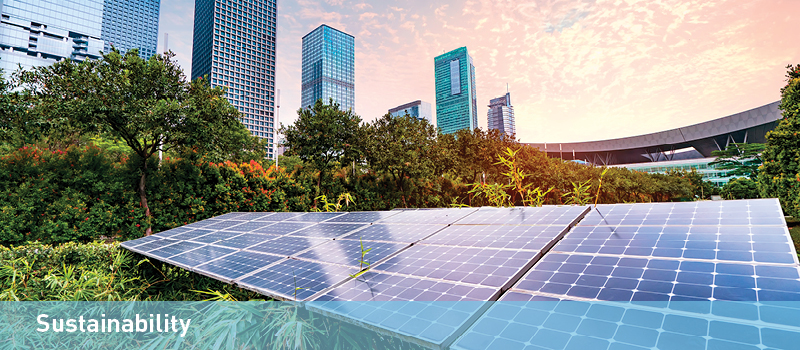The future office
Alex Dunn, Research Manager, Cromwell Property Group
Identifying the key trends that will impact the office in the coming years
Over the last 50 years, the style of the modern office has changed considerably. Initially, offices were populated by personal cellular spaces, which encouraged both privacy and a quiet working environment with limited interaction with colleagues apart from perhaps around the coffee machine. Working patterns gradually moved away from this, with recent designs favouring an open plan environment which encourages collaboration, creativity and team-based working.
Now, further change is afoot. Cromwell has interviewed an international network of contacts on their views about the office sector, overlaid its findings with analysis of changes in recent working practices and concluded that the office space of the future will look and operate differently. This transformation is being driven by four key trends: flexibility, technology, sustainability and wellbeing.

Flexibility in today’s world means offering employees choice over when, where and how they work. As companies compete to attract and retain talent, they are having to rethink traditional approaches to work and offer employees more flexibility. The benefits of doing so include a more engaged, productive and loyal workforce with employees themselves claiming a better work-life balance, more suitable working hours, often a reduction in time spent commuting, as well as reduced stress levels and mental health benefits.
Remote working is a large component of this flexibility. A sizeable proportion of the office-based workforce no longer needs to go to an office and can largely work anywhere. This is, in part, due to technological advancements over the last 20 years, but also due to the changing nature of work itself, the rise of the ‘knowledge worker’, as well as changes to workplace culture and employee expectations.
Despite this, before COVID-19, the statistics show only a relatively small proportion of employees actually worked remotely. In 2019, only 5.4% of employees in the European Union (EU) usually worked from home according to Eurostat, and this figure has remained relatively constant over the last decade. Over the same period, the proportion of those who sometimes worked from home rose from 6% in 2009 to 9% in 2019.
The increasing number of millennials in the workforce and their expectations and desire for a generally healthier work-life balance will likely see a rise in the percentage of these workers spending more time out of the office environment, whilst working. Prior to the pandemic, in a survey of over 7,300 of its employees, JLL reported that 47% of workers under the age of 35 worked away from the office at least once a month, compared to 27% of over 35-year olds.
The importance of going to a dedicated place of work should not be underestimated however. The office remains a place where employees can gather to collaborate, feel that they are part of a team and be creative in ways that are not possible remotely. The office also provides a social element to working life and is important for creating and maintaining the culture of a company, a critical element to overall performance. It will come as no surprise that, driven by an increase in remote working due to COVID-19, more companies are examining ways to retain social cohesion and culture amongst an increasingly distributed workforce.
Companies will assess their long-term needs for office space with these structural changes in mind. With a higher proportion of staff not needing to be in the office at the same time, some businesses will take the opportunity to review their real estate portfolio.
It remains to be seen whether this means businesses will reduce requirements or potentially elect to decentralise or redistribute operations by creating mini-hubs closer to where people live. Reductions due to flexible working patterns have the potential to be offset by any unwinding of densification trends of the last 20 years as requirements increase to cater for social distancing and the myriad of spaces now needed for meetings, breakouts, collaboration and quiet work.

Improved efficiency and reduced costs have historically been the main drivers of the adoption of new building technology but other drivers are now emerging. In particular, the current uncertainty around when and to what extent traditional business travel will resume, combined with a potentially larger portion of employees working remotely has meant that businesses must rethink their traditional large conference boardroom table formats, and consider the number of personal ‘quiet’ spaces now required for the increase in virtual meetings.
In the short term, the use of video conferencing apps to facilitate remote meetings will continue and the COVID-19 crisis could accelerate the development of new technologies such as virtual reality (VR) and augmented reality (AR) in order to enhance remote meetings further and help capture some human qualities in these virtual interactions. Fitouts will also need to adopt to this new technology as it arrives and come companies have already started to experiment with VR and AR using 3D avatars which can shake hands and interact with people in a meeting room, for example.
Technology is also being deployed to building management systems (BMS) to manage all aspects of a building’s operations from HVAC systems to smart lighting and smart elevators, with occupiers also beginning to turn to sensor technology to optimise space utilisation, air quality and workplace safety and adjust settings, where necessary, to maintain the optimal working environment. The ability of technology to monitor and measure emissions and the general performance of real estate is an ongoing and increasingly important imperative.
As more tech-native generations enter the workplace the shift towards technology integration, which requires a fast and stable internet connection, will only continue. Connectivity, both fibre optic and 5G, will become increasingly important from an occupier perspective, and as new technologies are introduced will likely increase both construction and fitout costs. In the long term, smart offices will be the norm, driving both human performance and also contributing to sustainability and wellness.

Real estate accounts for approximately 36% of global energy consumption and 40% of total direct and indirect CO2 emissions, according to JLL. With the global trend towards urbanisation and the ever-increasing demand for new building stock, these numbers are only set to rise.
It’s not all bad news however as The United Nations Environment Programme (UNEP) estimates that the real estate sector has the greatest opportunity to reduce greenhouse gas emissions when compared to other industries, with potential energy savings estimated to be as much as 50% or more by 2050.
Government policies regulating the energy performance of new buildings are a powerful way of reducing emissions to meet this challenge and are being introduced by an increasing number of countries. Leading cities are also introducing city-level regulation at a fast rate. Paris, for example, has a net zero carbon goal for 2050 and Amsterdam plans on being fully electric by the same time.
The ‘Green Deal’ has also been established in order to make the EU climate neutral by 2050. The deal looks to mobilise €100 billion of investment between 2021 and 2027 and one of the key programmes includes construction sustainability and increasing the renovation rate of old buildings.
Increasing regulation, as well as social and tenant pressures, are making sustainability increasingly critical for investors in terms of office construction, renovation and fitout. For those companies wishing to stay ahead of the curve, incorporating sustainability innovations into core business and asset management strategies is the only way to ensure the buildings of today do not become rapidly obsolete tomorrow.

Historically, many offices have been classed as ‘unwell’ spaces, with business leaders generally expressing cynicism when it came to the relationship between wellbeing and employee and business performance. There is an increasing level of research, however, that suggests office environments that do not contribute to wellbeing can impair performance and are ultimately at risk of heightened vacancy levels and loss of income.
According to Cushman & Wakefield, 77% of CEOs globally see accessing and retaining skilled labour as the biggest threat to their businesses. Attracting and retaining talent is not easy, and losing it is expensive, with anywhere from 50% to 200% of a lost employee’s salary spent on recruiting and onboarding new employees, not to mention integrating them into a new culture.
Businesses are therefore increasingly investing in their office space as part of their talent ‘attraction and retention package’, attempting to lure health-conscious employees with modern office designs, fresh air, ample daylight, green walls as well as other amenity options and break-out and recreation spaces. All these efforts will support positive mental health and general levels of productivity..
The inclusion of bike storage and end-of-trip facilities has also become critical with cycling to work and opportunity for physical activity throughout the day of increasing importance to many. The future workplace will look different as employers increasingly focus on these, and other wellbeing options.


